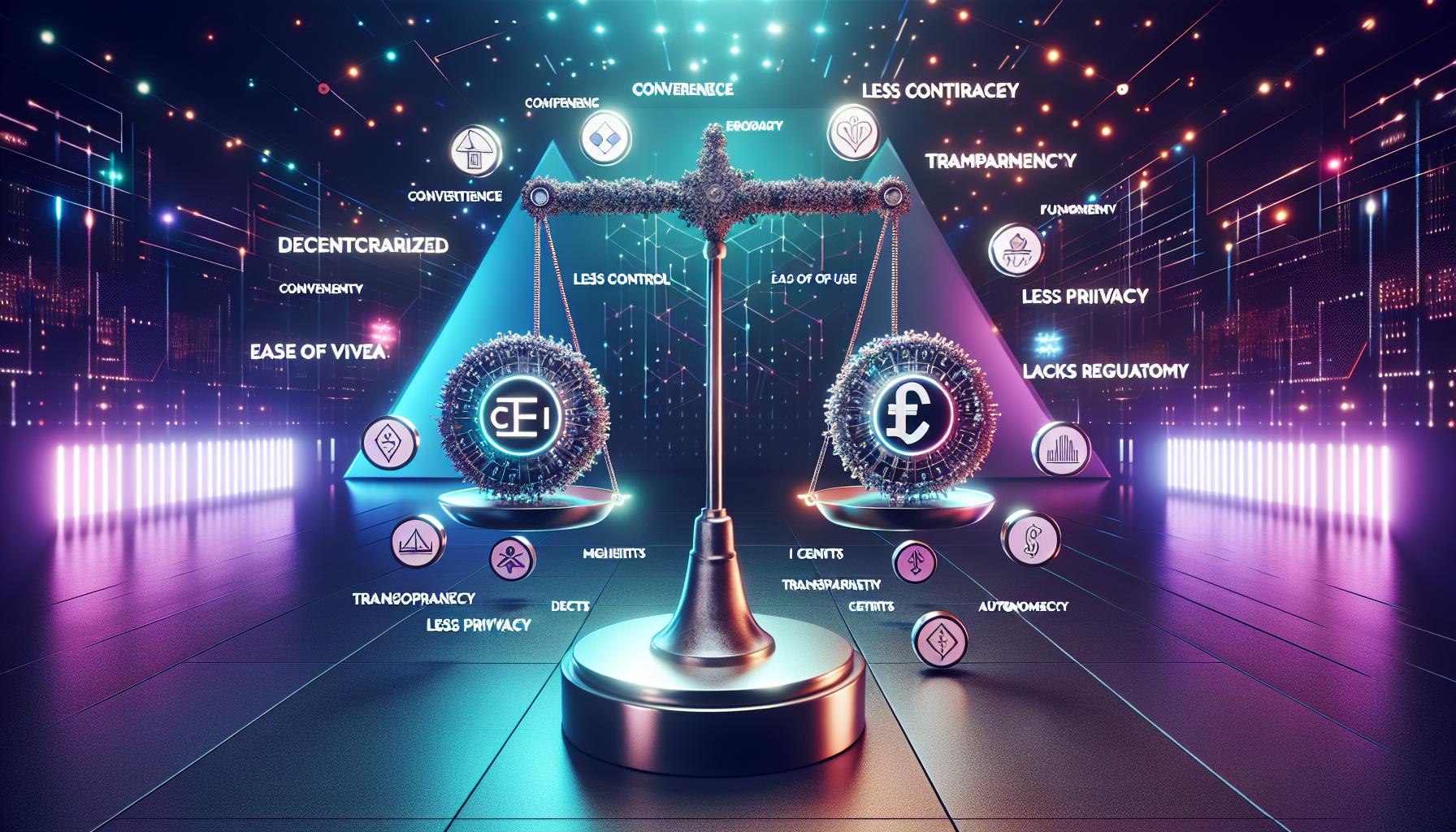Understanding the Key Differences: CeFi vs. DeFi
Centralized Finance (CeFi) and Decentralized Finance (DeFi) are two contrasting approaches to financial systems. CeFi refers to traditional financial institutions that are tightly regulated and controlled by a central authority, while DeFi operates on decentralized networks, utilizing blockchain technology and smart contracts to automate financial transactions. Understanding the key differences between CeFi and DeFi is crucial in order to assess their pros and cons.
Examining the Strengths of Centralized Finance
Centralized Finance offers several advantages that have made it the dominant system for centuries. First and foremost, CeFi provides a high level of security and protection for users. Financial institutions implement robust security measures such as encryption and multi-factor authentication to safeguard funds and personal information. Additionally, centralized systems have established mechanisms for dispute resolution and customer support, ensuring accountability in case of any issues or concerns.
CeFi also benefits from economies of scale and efficient infrastructure. Traditional banks and financial intermediaries have well-established networks, making it easy to access a wide range of financial services. Moreover, the involvement of a central authority in CeFi enables better coordination and control, making it easier to implement regulations and combat illicit activities like money laundering.
Unveiling the Advantages of Decentralized Finance
Decentralized Finance, on the other hand, brings forth a host of advantages that have captured the attention of many in recent years. One of the key strengths of DeFi lies in its accessibility. Anyone with an internet connection and a compatible device can participate in DeFi protocols, bypassing the need for traditional intermediaries. This opens up financial opportunities for the unbanked and underbanked populations.
Furthermore, DeFi offers a higher degree of transparency compared to CeFi. All transactions are recorded on a public blockchain, enabling anyone to verify the accuracy and integrity of the financial operations. This level of transparency reduces the risk of fraud and corruption.
Another advantage of DeFi is the potential for innovation and customization. Smart contracts enable the creation of customizable financial products and services, allowing users to tailor their financial interactions to their specific needs. This flexibility and creativity foster experimentation and can lead to the development of more inclusive and efficient financial systems.
Scrutinizing the Weaknesses of CeFi in Comparison
While CeFi has its strengths, it is not without its weaknesses. One major drawback of centralized systems is their susceptibility to single points of failure. If a central authority or institution experiences a security breach or operational failure, it can have significant ramifications for all users. Moreover, the reliance on intermediaries can result in higher costs, fees, and delays in financial transactions.
CeFi is also susceptible to censorship and political interference. Governments and regulatory bodies can exert control over centralized financial systems, leading to restrictions on certain transactions or freezing of assets. In some cases, this can limit financial freedom and hinder economic development.
Weighing the Drawbacks of DeFi against its Benefits
Despite its advantages, DeFi is not without its drawbacks. One of the main concerns associated with DeFi is the lack of regulation. The absence of oversight and regulation means that participants are exposed to higher risks, such as scams, hacks, and market manipulation. Additionally, the reliance on smart contracts leaves room for vulnerabilities and potential exploitation by malicious actors.
Another challenge for DeFi is the scalability issue. As more users join decentralized networks, the blockchain’s capacity and transaction speed can become limited. This can lead to higher fees and slower processing times, hindering the seamless experience that users expect from financial systems.
In conclusion, both CeFi and DeFi have their merits and flaws. CeFi offers security, efficient infrastructure, and regulatory oversight, while DeFi provides accessibility, transparency, and innovation. Understanding the pros and cons of each approach is essential for individuals and institutions to make informed decisions about their financial interactions. The future may see a convergence of these two approaches, as regulators and developers work towards striking a balance between security, innovation, and inclusivity in the financial world.













